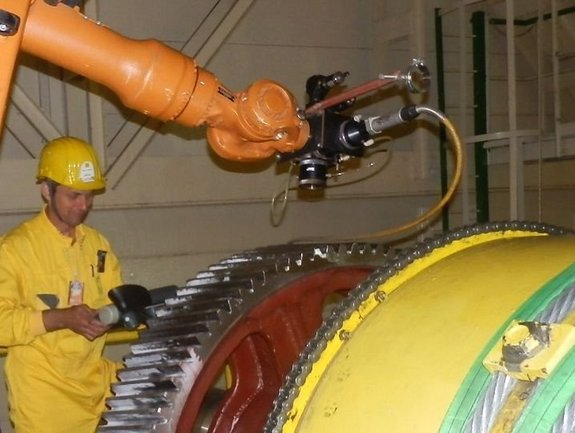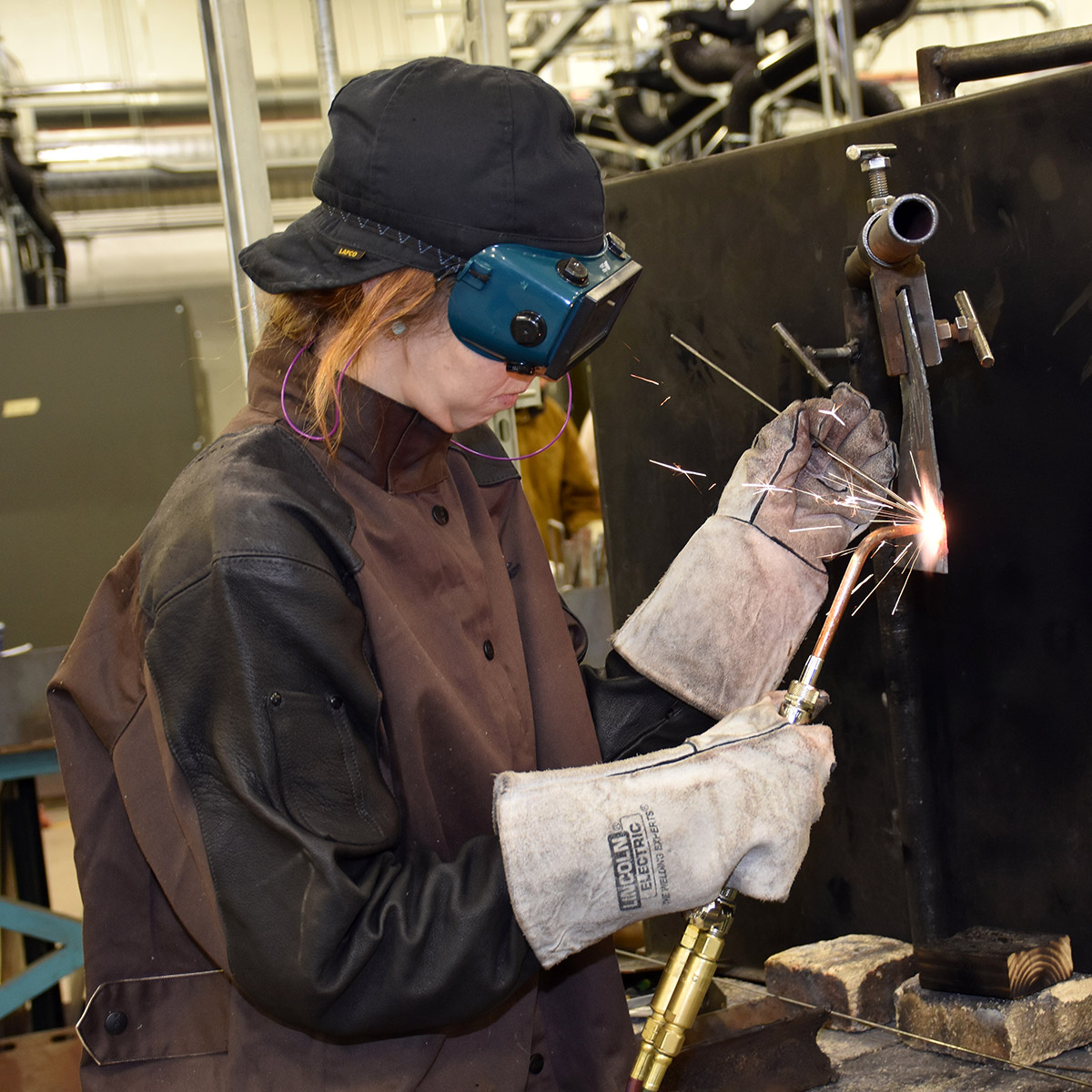Typical Welding Repair Service Issues and Just How to Address Them Successfully
Welding repair services typically run into a series of issues that can jeopardize the stability of the end product. Common issues consist of poor infiltration, porosity, and imbalance, to name a few. Each defect offers one-of-a-kind challenges that need particular methods for resolution. Comprehending these concerns is crucial for welders intending to enhance their skills and outcomes. This discussion will discover these usual welding repair work concerns and efficient methods to resolve them.
Insufficient Penetration
Poor infiltration takes place when the weld metal fails to totally fuse with the base product, causing weak joints and potential architectural failures. This issue often comes from insufficient warmth input, inaccurate electrode angle, or inappropriate welding speed. Welders may experience inadequate penetration because of a miscalculation of the essential specifications for a details product thickness or type. In addition, contamination on the base material's surface can hinder effective bonding, aggravating the trouble. To deal with poor penetration, welders must guarantee suitable settings on their equipment and preserve a tidy work surface. Routine assessment of welds is recommended to recognize any shortages early, enabling timely improvements and the avoidance of endangered structural stability in welded settings up.
Porosity
Porosity is a common issue in bonded joints that shows up as small gas bubbles entraped within the weld metal. This problem can endanger the honesty of the weld, leading to reduced stamina and prospective failure under stress. Belgrade Fabrication. Porosity normally arises from contamination, wetness, or improper welding techniques, which permit gases to run away right into the liquified weld pool. To attend to porosity, welders must assure appropriate surface preparation, preserve a tidy workplace, and make use of suitable welding specifications. In addition, selecting the ideal filler product and protecting gas can reduce gas entrapment. Regular assessment and testing of welds can assist determine porosity early, ensuring timely rehabilitative activities are taken, thus protecting the top quality and dependability of the bonded structure
Imbalance
Misalignment in welding can arise from numerous factors, including incorrect arrangement and thermal development. Recognizing the source is important for efficient resolution. A number of correction methods are readily available to straighten elements and assure architectural honesty.
Root causes of Misalignment
Welding misalignment commonly comes from a variety of underlying concerns that can endanger architectural stability. One key cause is incorrect fit-up of elements before welding, which can cause spaces and irregular surfaces. Variations in thermal expansion throughout the welding process can likewise cause distortion, especially if the materials being signed up with have different coefficients of expansion. Furthermore, inadequate securing and fixturing might fail to hold elements safely in position, leading to movement throughout welding. Inadequately kept equipment, including welding equipments and devices, may introduce inconsistencies in the weld bead, additional adding to imbalance. Driver mistake, stemming from insufficient training or experience, can additionally play a substantial role in producing misaligned welds.

Improvement Techniques Readily Available
Dealing with misalignment efficiently calls for a combination of rehabilitative methods customized to the specific concerns at hand. One usual method is using jigs or components to hold elements in the right placement throughout welding, making certain regular placement. Additionally, preheating the products can assist decrease distortion and enhance fit-up. For considerable misalignment, mechanical adjustment strategies, such as making use of hydraulic jacks or clamps, can be employed to fix the position prior to welding. Post-weld warm treatment may additionally be required to ease anxieties triggered by imbalance. Ultimately, cautious examination and modification throughout the configuration stage can protect against misalignment problems from coming to be considerable problems, advertising a smoother welding process and enhancing total structural integrity.
Distortion
Distortion is a common challenge in welding that can occur from numerous factors, consisting of irregular heating & cooling. Recognizing the reasons for distortion is crucial for executing efficient avoidance techniques. Addressing this problem not just boosts architectural integrity yet additionally enhances the general high quality of the weld.
Sources of Distortion
When subjected to the intense warm of welding, products often undergo adjustments that can cause distortion. This sensation mainly arises from thermal growth and contraction throughout the welding process. As the weld location warms up, the product broadens; upon air conditioning, it contracts, which can create internal stresses. Additionally, irregular heating throughout a workpiece can exacerbate these stress and anxieties, resulting in warping or flexing. The sort of product also plays a substantial tweco duty; steels with differing thermal conductivity and coefficients of development may respond differently, leading to unforeseeable distortions. Poor joint layout and insufficient fixturing can add to misalignment throughout welding, boosting the likelihood of distortion. Understanding these reasons is important for efficient welding repair work and prevention approaches.
Avoidance Techniques
Efficient prevention methods for distortion during welding concentrate on controlling heat input and making sure proper joint layout. Keeping a constant warmth input helps to reduce thermal check this site out development and contraction, which can bring about distortion. Utilizing methods such as preheating the work surface can additionally reduce the temperature level gradient, advertising uniform home heating. Furthermore, picking ideal joint designs, such as T-joints or lap joints, can enhance stability and minimize stress concentrations. Applying appropriate fixturing to safeguard the work surfaces in position better aids in keeping placement throughout the welding procedure. Staggered welding series can disperse heat extra equally, avoiding local distortion. By using these strategies, welders can substantially lower the chance of distortion and boost the general quality of their welds.
Cracking
Breaking is a common problem come across in welding repair work, commonly arising from different aspects such as inappropriate cooling prices, material selection, or poor joint preparation. The occurrence of cracks can substantially jeopardize the integrity of the weld, leading to possible failings throughout procedure. To resolve this problem, welders need to first assess the origin, guaranteeing that products are suitable and suitably selected for the particular application. Furthermore, controlling the cooling price throughout the welding process is essential; rapid air conditioning can induce tension and cause cracking. Correct joint design and preparation additionally add to minimizing the risk. Applying these techniques can enhance weld high quality and durability, eventually minimizing the likelihood of splitting in finished weldments.

Incomplete Blend
A significant problem in welding repairs is insufficient fusion, which takes place when the weld steel does not adequately bond with the base product or previous weld passes - Belgrade Welding. This issue can result in weaknesses in the joint, potentially compromising the honesty of the welded structure. Aspects adding to incomplete combination include insufficient warm input, incorrect welding technique, and contamination of the surface areas being joined. To address this problem efficiently, welders need to guarantee correct pre-weld cleaning and surface area prep work, you could try this out in addition to adjust their welding specifications to accomplish ample penetration and fusion. Normal inspection throughout the welding procedure can likewise aid recognize incomplete fusion early, permitting prompt restorative procedures to improve the total top quality of the weld
Overheating
While welding fixings can boost structural honesty, overheating offers a significant difficulty that can cause product destruction. Too much warmth throughout welding can alter the mechanical residential properties of steels, resulting in lowered toughness, enhanced brittleness, and bending. This sensation is especially important in high-stress applications where structural reliability is vital. Determining getting too hot can involve visual examinations for staining or distortion, as well as keeping track of temperature during the welding process. To alleviate the risks related to overheating, welders should employ appropriate methods, such as managing heat input, readjusting traveling rate, and using suitable filler materials. In addition, implementing pre- and post-weld warm therapies can help restore material buildings and improve the overall quality of the fixing, guaranteeing lasting performance and security.
Frequently Asked Inquiries
What Are the Typical Indicators of a Welding Problem?

Just How Can I Evaluate My Welds for High quality?
To test welds for quality, one can make use of visual inspections, ultrasonic testing, and radiographic techniques. Each technique guarantees structural stability, determines problems, and validates adherence to specified requirements, ultimately boosting the integrity of the bonded joints.
What Safety and security Precautions Should I Take While Welding?
When welding, one need to prioritize safety and security by putting on appropriate personal protective equipment, making sure proper air flow, securing flammable materials away, preserving a clean workspace, and understanding surroundings to avoid injuries and crashes.
Can I Repair a Weld Without Redoing the Entire Joint?
Repairing a weld without renovating the whole joint is feasible, depending on the damages (Montana Mobile Welding and Repair Belgrade Welding). Methods such as grinding, including filler product, or making use of a welding procedure can effectively resolve specific imperfections while protecting the surrounding framework
What Equipment Are Vital for Reliable Welding Fixes?
Crucial tools for efficient welding repair services include a welding maker, wire brush, grinder, protective equipment, clamps, and filler products. Each tool plays an essential role in making certain quality and safety throughout the repair work process. Porosity normally arises from contamination, moisture, or improper welding strategies, which permit gases to escape right into the molten weld pool. Badly maintained tools, including welding devices and tools, might introduce variances in the weld grain, further adding to imbalance. When subjected to the intense heat of welding, materials frequently undergo changes that can lead to distortion. Breaking is a typical problem encountered in welding fixings, frequently resulting from various aspects such as incorrect cooling rates, product selection, or inadequate joint preparation. A substantial issue in welding fixings is insufficient blend, which occurs when the weld steel does not effectively bond with the base product or previous weld passes.